
Gathering and using the participants’ feedback may be considered the most critical aspect of running a beta test program.
However, handling this process can sometimes be difficult, especially if you’re running a large-scale beta testing phase with many testers.
To help you meet these challenges, we give you five tips on how to manage feedback from your beta testers and use it effectively.
By following these tips, we believe you can better handle this part of the beta testing phase—collecting helpful feedback and utilizing it to improve your app.
Table of Contents
Ask for feedback at the right time
Although the testers sending you feedback may seem like an obvious requirement, sometimes you need to remind participants about this practice.
You’d do well to ask for comments and suggestions at the right times to accurately assess the user experience at different stages of the beta testing process.
In general, the three best times to ask for feedback are:
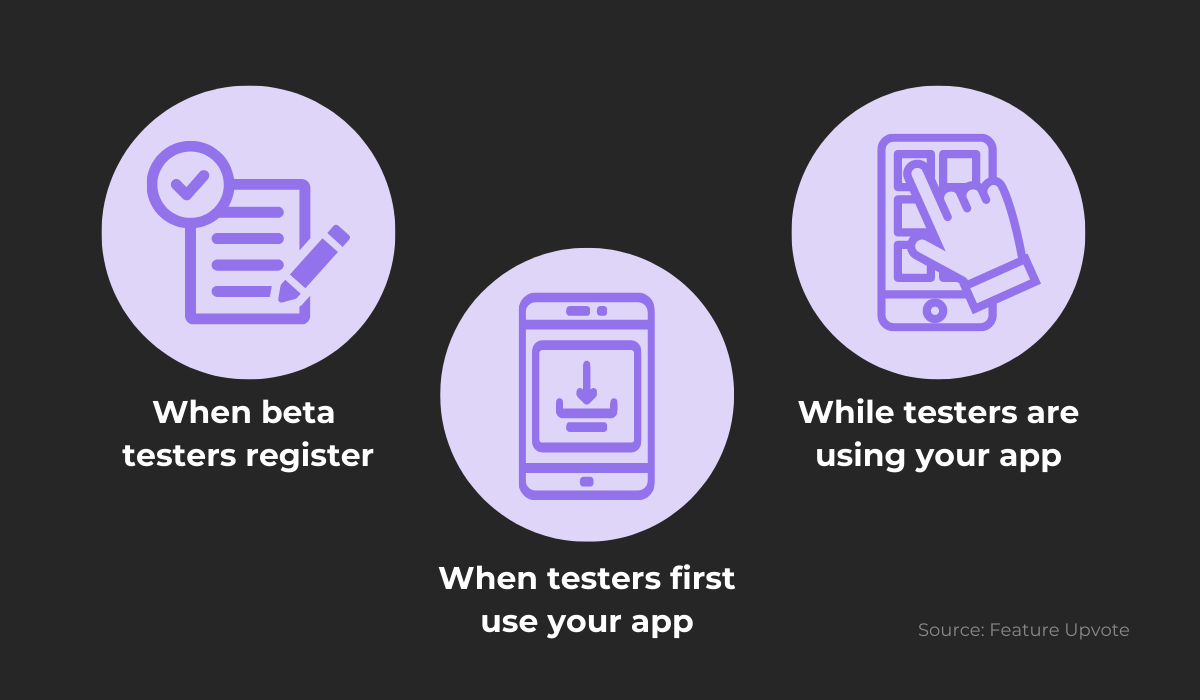
When users register for your program, you should provide them with a detailed document describing the beta testing program and what you expect from participants.
Giving beta testers clear instructions is an excellent way to ensure the success of your beta testing program, and one of the most important instructions to include should be the need for regular feedback.
You can emphasize the need for feedback even further by including it as a prerequisite for gaining rewards.

In Sangfor’s beta testing program, they not only motivate beta testers to give feedback with a monetary reward, but they also use this opportunity to focus their attention on aspects of their app that they want thoroughly tested, such as its functionality.
The next time you can remind participants about giving you feedback is the first time they use your app.

Get unreal data to fix real issues in your app & web.
For example, you can send users an email or have an in-app popup message the first time they open your app—stressing the point that their feedback will help you improve your product.
The final way to remind users to send you feedback is to offer them an easy way to report issues or give comments while they use your app.
For example, your team can add in-app links or buttons in visible areas in your software and the settings or help screen.
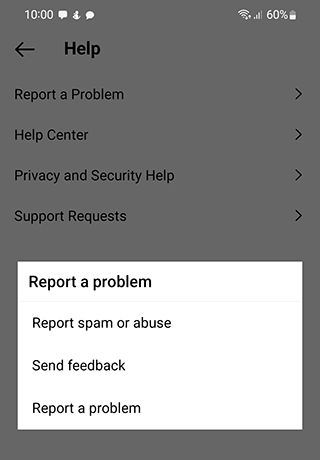
In the screenshot above, you can see how Instagram handles the way users can send feedback from their Help section—although this is not an app in beta, you can still use their example for your app.
Asking for feedback before and during the entire beta testing phase is a helpful way to raise the chances of you getting enough valuable feedback to improve your app.
Use the right tool for gathering feedback
One way to gather feedback while beta testers are using your app is to have a tool that can facilitate this process and make it as easy and efficient as possible.
After all, feedback from beta testers can significantly increase the quality of your app, so you’d do well to remove any obstacles when they want to send you feedback.
As the founder of Feature Upvote, Steve McLeod, writes:
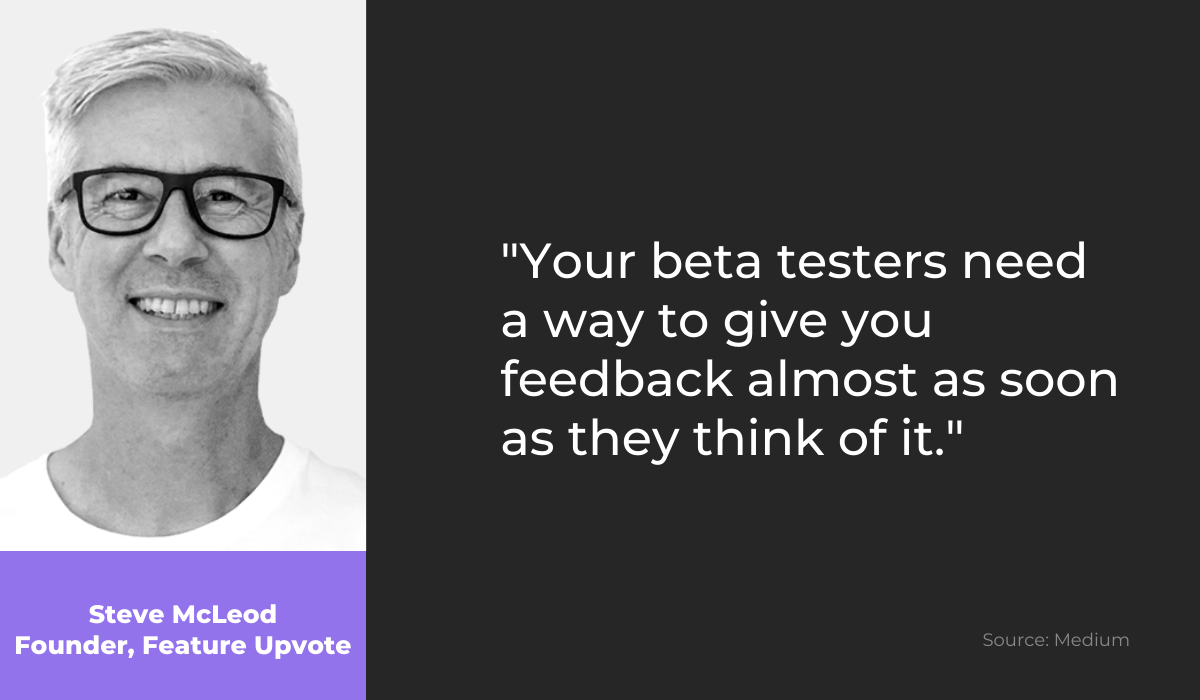
You should avoid having testers follow complicated instructions, fill out surveys or have to send you emails every time they encounter an issue.
Instead, you can consider using a tool to ease your feedback-gathering process.
You can use different third-party tools, and you should consider the various features your company and your team might need.
We recommend finding a tool that allows automating the feedback process as much as possible, making it a more efficient and clear procedure for users.
For example, you can use our tool, Shake.
Shake is a bug and crash reporting tool that automates much of the feedback process, eliminating the need for testers to write reports and gather bug data manually.
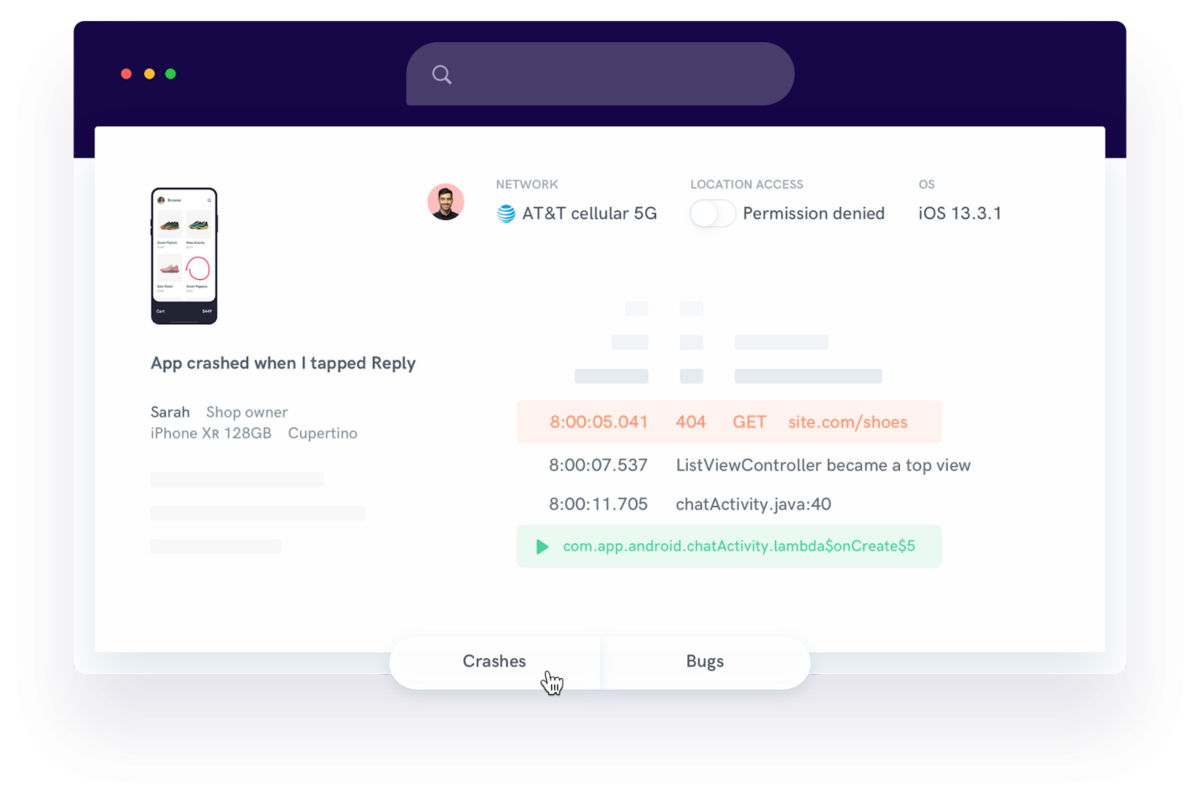
By instructing testers to shake their phones when they encounter an issue, Shake can automatically collect relevant data and create a comprehensive report like the one shown in our example above.
Setting Shake up is easy—you can add it to your app in a few minutes, and testers can start using it immediately.
The great thing about Shake is that it allows testers to submit feedback without having to leave your app at all.
Moreover, beta testers can supplement their crash and bug reports with any questions they may have, as well as provide suggestions for improving your app:
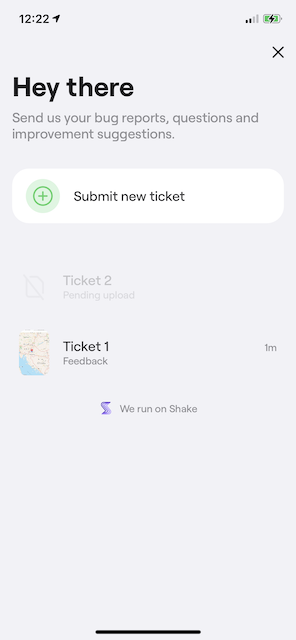
Through a simple user interface, beta testers can send bug reports and suggestions by submitting tickets. They can also keep track of their past reports effortlessly.
By using an in-app feedback tool with many features like Shake, your team will be able to effectively receive relevant data, which will be useful while they fix and improve your app before release.
Triage the feedback you receive
After utilizing a tool for gathering feedback, you need to be prepared to handle the received reports effectively.
Both high-quality and poorly written feedback can start accumulating rapidly, and you might have difficulty sorting it out, let alone trying to implement it all in your app.
Therefore, after you receive feedback from your users, don’t just take it at face value and take some time to assess and prioritize it to avoid getting overwhelmed.
A practice that can help you with this process is feedback triage.
Triage is a French word that means sorting, and this practice is used in various fields to help prioritize certain issues—figuring out which things to tackle first and which to postpone or delay indefinitely.
One way you can use your beta testers to sort their feedback for you is by using a voting tool, where they can vote on the issues they think should be fixed first or the features they want your team to develop next.
One example of such a tool is Upvoty.
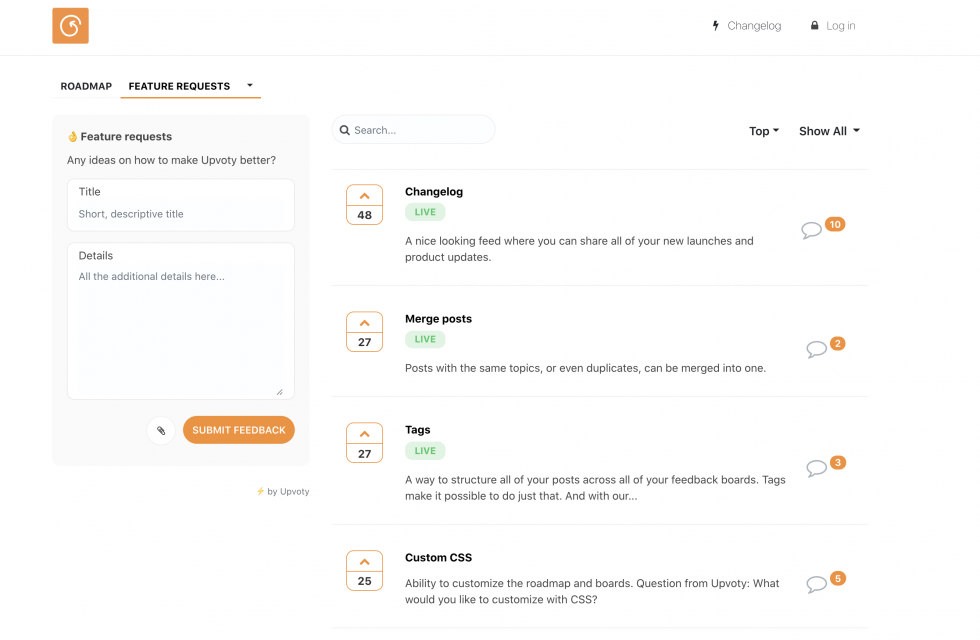
Through a tool like this, you can gather all the tester feedback you’ve received so far and have users vote and comment on the things they deem most important.
Even though you can quickly see the most popular suggestions about your app, you’ll still need to sort out the received feedback internally—sometimes, the most popular responses aren’t the most important.
There are various ways you can perform an internal feedback triage, but we will focus on a straightforward and useful framework that prioritizes feedback according to the value it can give to your app and how complicated it is to implement.
This framework is called the Value vs. Effort matrix, and looks something like this:
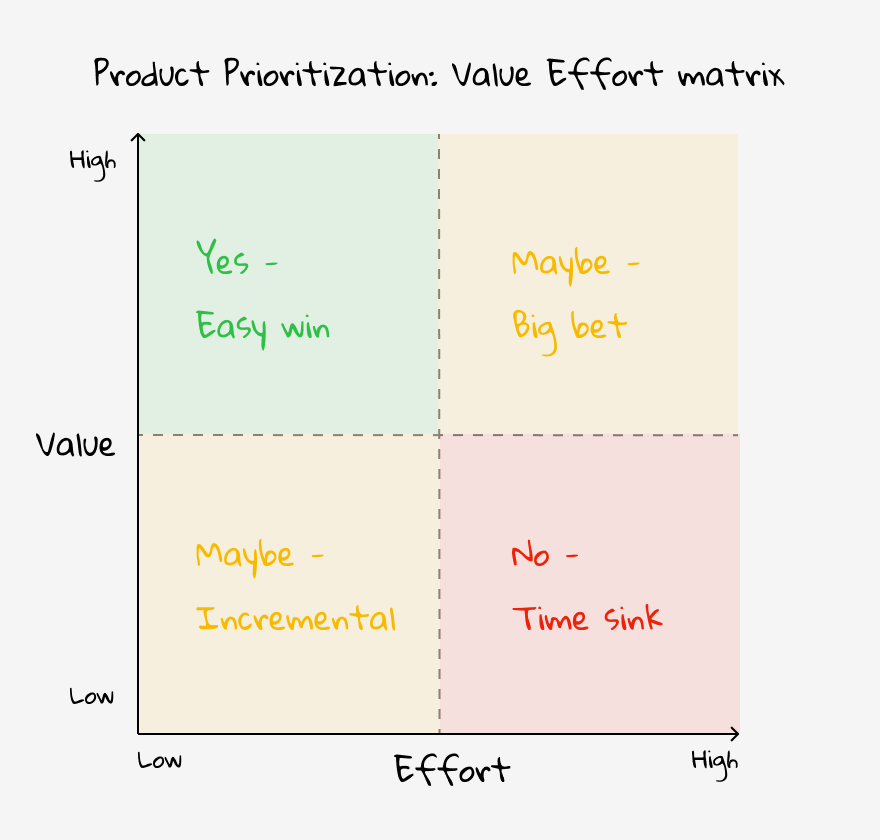
It’s a simple tool where you map out the value users can get by listening to the feedback and making a change in your app, while also comparing it to the effort required to make it.
Anything with high user value that takes low effort should be seriously considered to implement, while you’ll want to avoid the high-effort and low-value suggestions.
Feedback triage means that the input you’ve received from beta testers has been looked at, understood, and prioritized.
Therefore, use this process to properly focus your team’s efforts on high-priority bug fixes or feature additions.
Make quick iterations to your app
Doing a feedback triage can make you end up with a list of bugs to fix and features to implement ordered by their importance.
The question you may have now is—when does your team update the app and make these changes?
The unique benefit of running a beta test program is that you can update and improve your app rapidly while the process is still ongoing.
Beta testers will expect these quick iterations as they understand that your product is still incomplete and prone to changes.
Using this to your advantage, you can fix many issues quickly and build features that users want to see included, all the while continuously gathering feedback for these changes in real time.
Eric Ries, the writer of Lean Startup, describes the goal that you should have in mind while developing a product as follows:
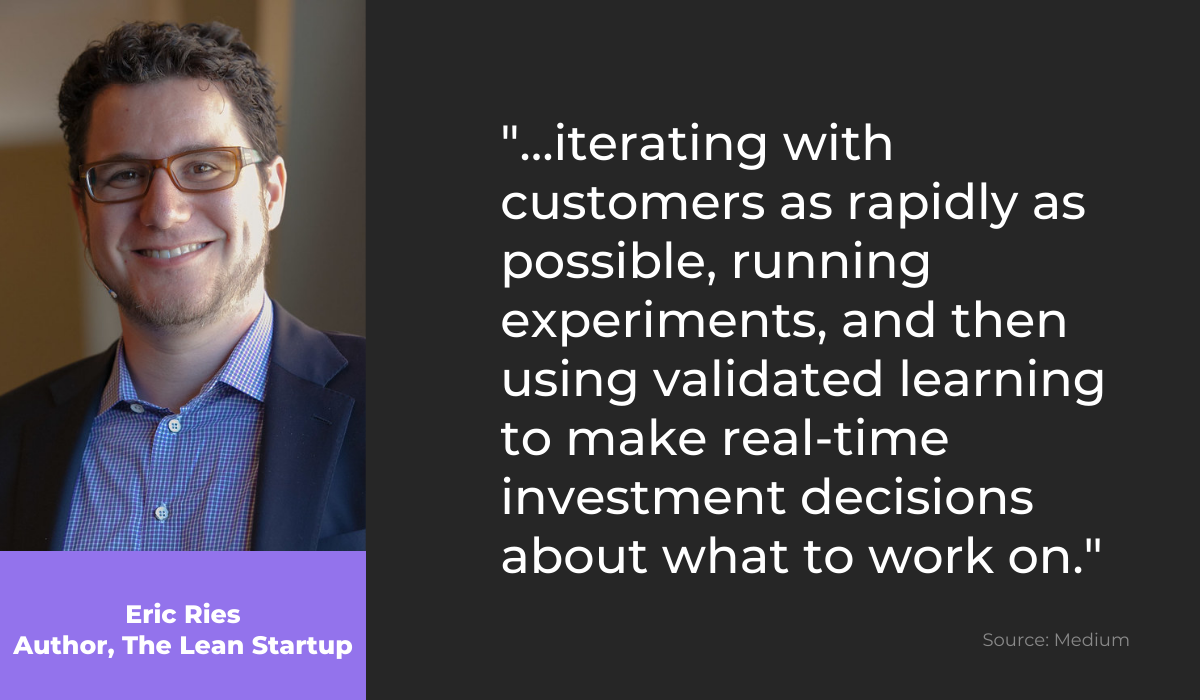
By using beta testers’ feedback, you’ll be able to quickly assess what your potential end-users want to see from your app and any issues they may have with it, so that you can work on these crucial points first.
Making this many fast changes to your app may be frustrating.
After all, your app has already gone through a lengthy development process—your company has studied your target audience and their needs, and you have tried to deliver a high-quality product based on this.
However, until you receive feedback from actual users, you can’t really know if your product effectively solves their needs and wants.
When you’re not constantly iterating and making adjustments according to user feedback, you may end up creating a feature that customers neither want nor need.
This practice will not only waste your developers’ time and resources, but you will have a worse product in the end.
So, how fast should you iterate?
You can do so daily or have your team add new small features and address bugs as they go—if your team can’t complete a feature in a single iteration, you can break it down into smaller features.
This practice can be highly beneficial for your product, and you should continue it even after your beta phase is over—asking for customer feedback and updating your app regularly.
Be sure to acknowledge your beta testers
As you can tell by now, beta testers’ feedback is highly valuable to your company—helping you make informed decisions on improving your app and increasing its quality.
A thing you should consider is to somehow show your beta testers that you appreciate their input.
During the entire beta testing process, you can easily forget to acknowledge your beta testers, making them feel like they aren’t heard or valued.
One practice that can help you consider and review your tester’s feedback and ensure you respond to it promptly is to create a feedback loop.
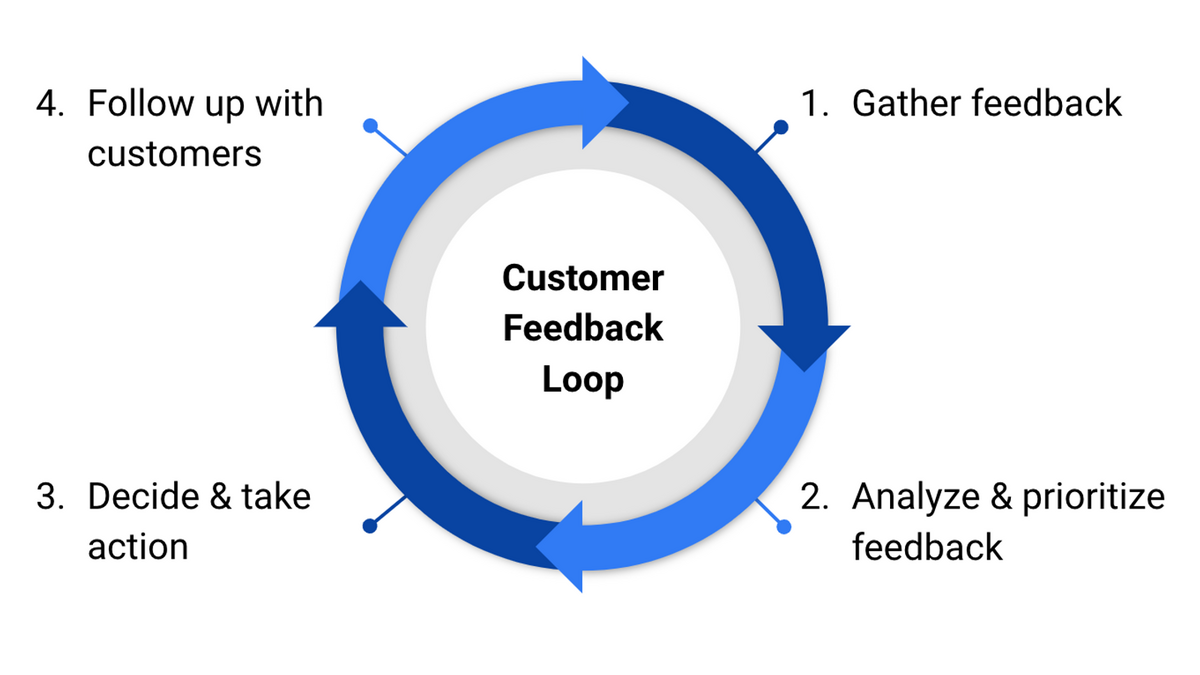
After gathering, prioritizing, and taking action on the feedback you receive, the final step in the loop is to follow up with your customers.
You should respond to testers whether the action you take is implementing their feedback or not—helping them not get discouraged during the beta process and motivating them to keep giving you feedback.
Try to respond to every feedback you receive, even if it means using an automatic reply tool.
After completing the beta testing phase, ensure your company acknowledges all the participants, their hard work, and contribution.
If possible, you should have a way to reward the testers that provided you with great feedback you ended up using to improve your app and acknowledge them as much as possible.
For example, the team at Influitive, a customer advocacy platform, showed their appreciation to participants in their beta testing program with the following message:
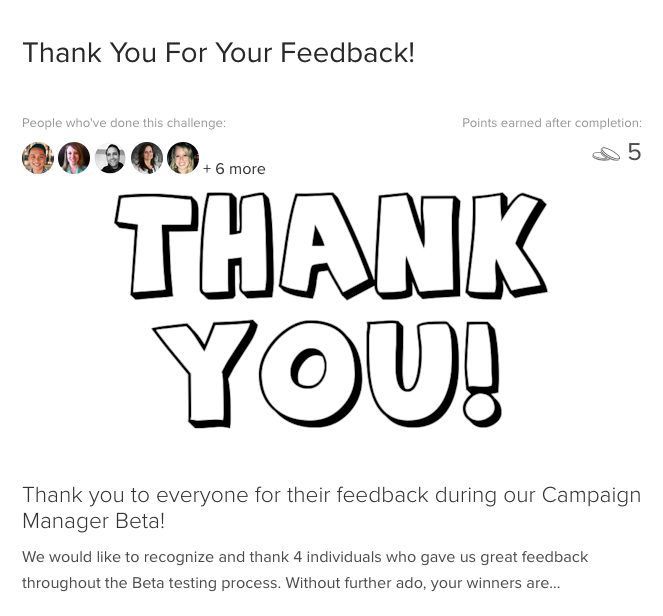
Besides thanking all participants, Influitive pointed out the few individuals who gave the most detailed and high-quality feedback—giving them a public shoutout and sending them gift cards as a reward.
Your response to user input doesn’t have to be something grand. A simple thank you is sometimes enough to make testers feel their contribution got the attention it deserves.
Conclusion
Managing beta tester feedback can be a time-consuming and challenging process, but it’s the primary purpose behind the beta phase of development, so you’ll want to do it well.
Different organizations manage feedback in their own ways, both in the ways of convincing testers to give them feedback and in using it effectively.
In this article, we’ve covered five tips that we consider to be some of the most fundamental ways to handle this process.
By implementing some of these tips in your feedback management strategy, we believe that you can fully utilize the effort of your beta testers and use it to create a better product that end-users will love.




